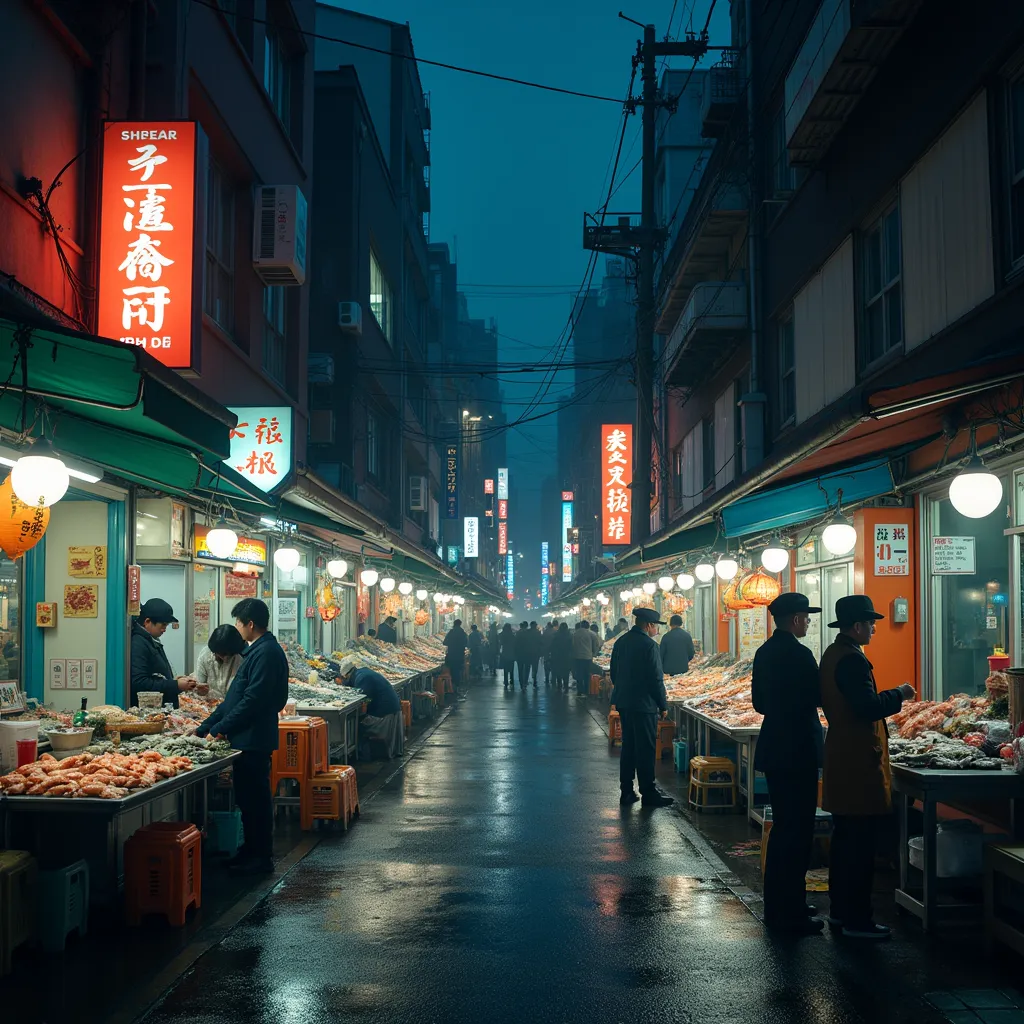flux-cinestill
Maintainer: adirik

41

| Property | Value |
|---|---|
| Run this model | Run on Replicate |
| API spec | View on Replicate |
| Github link | No Github link provided |
| Paper link | No paper link provided |
Create account to get full access
Model overview
flux-cinestill is a Stable Diffusion model created by adirik that is designed to produce images with a cinematic, film-like aesthetic. It is part of the "FLUX" series of models, which also includes similar models like [object Object], [object Object], and [object Object].
Model inputs and outputs
The flux-cinestill model takes a text prompt as input and generates one or more images as output. The user can specify various parameters such as the seed, aspect ratio, guidance scale, and number of inference steps to control the output.
Inputs
- Prompt: A text prompt describing the desired image
- Seed: A random seed to ensure reproducible generation
- Model: The specific model to use for inference (e.g. "dev" or "schnell")
- Width/Height: The desired dimensions of the output image
- Aspect Ratio: The aspect ratio of the output image
- Num Outputs: The number of images to generate
- Guidance Scale: The strength of the text guidance during the diffusion process
- Num Inference Steps: The number of steps to perform during the diffusion process
- Extra LoRA: An additional LoRA model to combine with the main model
- LoRA Scale: The scaling factor for the main LoRA model
- Extra LoRA Scale: The scaling factor for the additional LoRA model
- Replicate Weights: Custom weights to use for the Replicate model
Outputs
- Output Images: One or more images generated based on the input prompt and parameters
Capabilities
The flux-cinestill model is capable of generating high-quality images with a cinematic, film-like aesthetic. It can produce a wide variety of scenes and subjects, from realistic landscapes to surreal, dreamlike compositions. The model's ability to blend different LoRA models allows for further customization and fine-tuning of the output.
What can I use it for?
The flux-cinestill model can be used for a variety of creative projects, such as generating concept art, illustrations, or even movie posters. Its cinematic style could be particularly useful for filmmakers, photographers, or artists looking to create a specific mood or atmosphere in their work. The model's flexibility also makes it suitable for personal projects or experiments in visual arts and design.
Things to try
Some interesting things to try with the flux-cinestill model include experimenting with different combinations of LoRA models, adjusting the guidance scale and number of inference steps to achieve different styles, and using the model to generate a series of images with a cohesive cinematic aesthetic. Exploring the model's capabilities with a wide range of prompts can also lead to unexpected and intriguing results.
This summary was produced with help from an AI and may contain inaccuracies - check out the links to read the original source documents!
Related Models

flux-koda

1
flux-koda is a Lora-based model created by Replicate user aramintak. It is part of the "Flux" series of models, which includes similar models like flux-cinestill, flux-dev-multi-lora, and flux-softserve-anime. These models are designed to produce images with a distinctive visual style by applying Lora techniques. Model inputs and outputs The flux-koda model accepts a variety of inputs, including the prompt, seed, aspect ratio, and guidance scale. The output is an array of image URLs, with the number of outputs determined by the "Num Outputs" parameter. Inputs Prompt**: The text prompt that describes the desired image. Seed**: The random seed value used for reproducible image generation. Width/Height**: The size of the generated image, in pixels. Aspect Ratio**: The aspect ratio of the generated image, which can be set to a predefined value or to "custom" for arbitrary dimensions. Num Outputs**: The number of images to generate, up to a maximum of 4. Guidance Scale**: A parameter that controls the influence of the prompt on the generated image. Num Inference Steps**: The number of steps used in the diffusion process to generate the image. Extra Lora**: An additional Lora model to be combined with the primary model. Lora Scale**: The strength of the primary Lora model. Extra Lora Scale**: The strength of the additional Lora model. Outputs Image URLs**: An array of URLs pointing to the generated images. Capabilities The flux-koda model is capable of generating images with a unique visual style by combining the core Stable Diffusion model with Lora techniques. The resulting images often have a painterly, cinematic quality that is distinct from the output of more generic Stable Diffusion models. What can I use it for? The flux-koda model could be used for a variety of creative projects, such as generating concept art, illustrations, or background images for films, games, or other media. Its distinctive style could also be leveraged for branding, marketing, or advertising purposes. Additionally, the model's ability to generate multiple images at once could make it useful for rapid prototyping or experimentation. Things to try One interesting aspect of the flux-koda model is the ability to combine it with additional Lora models, as demonstrated by the flux-dev-multi-lora and flux-softserve-anime models. By experimenting with different Lora combinations, users may be able to create even more unique and compelling visual styles.
Updated Invalid Date

flux-dev-multi-lora

285
The flux-dev-multi-lora is an AI model developed by lucataco, who has created several similar models such as the flux-dev-lora, ssd-lora-inference, and ai-toolkit. This model is part of the FLUX.1-Dev series and allows for the exploration of multi-LoRA capabilities. Model inputs and outputs The flux-dev-multi-lora model takes in a variety of inputs to generate images, including a prompt, seed, aspect ratio, number of outputs, guidance scale, number of inference steps, and the ability to specify Hugging Face LoRA paths and scales. The outputs are an array of image URLs in the specified format, such as WEBP. Inputs Prompt**: Text prompt for the generated image Seed**: Random seed for reproducible generation Hf Loras**: Hugging Face paths or URLs to the LoRA weights Lora Scales**: Scales for the LoRA weights, default is 0.8 Num Outputs**: Number of images to generate, up to 4 Aspect Ratio**: Aspect ratio for the generated images, default is 1:1 Output Format**: Format of the output images, default is WEBP Guidance Scale**: Guidance scale for the diffusion process, default is 3.5 Output Quality**: Quality of the output images, from 0 to 100, default is 80 Num Inference Steps**: Number of inference steps, default is 28 Disable Safety Checker**: Option to disable the safety checker for generated images Outputs Array of image URLs**: The generated images in the specified format Capabilities The flux-dev-multi-lora model allows for the exploration of using multiple LoRA weights simultaneously during the image generation process. This can potentially lead to more nuanced and interesting image outputs by combining the effects of different LoRA models. What can I use it for? The flux-dev-multi-lora model can be used for a variety of creative and experimental image generation tasks. For example, you could try combining different LoRA weights to see how they interact and influence the final output. This model could be useful for artists, designers, or anyone interested in exploring the capabilities of AI-generated imagery. Things to try One interesting thing to try with the flux-dev-multi-lora model is to experiment with different combinations of LoRA weights and scales. By adjusting these parameters, you can potentially create unique and unexpected image outputs that blend the characteristics of multiple LoRA models. This can be a fun and rewarding way to discover new and surprising visual styles.
Updated Invalid Date

flux-schnell-lora

79
The flux-schnell-lora is an AI model developed by lucataco and is an implementation of the black-forest-labs/FLUX.1-schnell model as a Cog model. This model is an explorer for the FLUX.1-Schnell LoRA, allowing users to experiment with different LoRA weights. Model inputs and outputs The flux-schnell-lora model takes a variety of inputs, including a prompt, a random seed, the number of outputs, the aspect ratio, the output format and quality, the number of inference steps, and the option to disable the safety checker. The model outputs one or more generated images based on the provided inputs. Inputs Prompt**: The text prompt that describes the image you want to generate. Seed**: A random seed to ensure reproducible generation. Num Outputs**: The number of images to generate. Aspect Ratio**: The aspect ratio of the generated images. Output Format**: The file format of the output images (e.g. WEBP, PNG). Output Quality**: The quality of the output images, ranging from 0 to 100. Num Inference Steps**: The number of inference steps to use during image generation. Disable Safety Checker**: An option to disable the safety checker for the generated images. Outputs Generated Images**: The model outputs one or more generated images based on the provided inputs. Capabilities The flux-schnell-lora model is capable of generating images based on text prompts, with the ability to explore different LoRA weights to influence the generation process. This can be useful for creative projects or exploring the capabilities of the underlying FLUX.1-Schnell model. What can I use it for? You can use the flux-schnell-lora model to generate images for a variety of creative projects, such as illustrations, concept art, or product visualizations. The ability to explore different LoRA weights can be particularly useful for experimenting with different artistic styles or visual effects. Things to try Some ideas for things to try with the flux-schnell-lora model include: Experimenting with different prompts to see how the model responds. Trying different LoRA weights to see how they affect the generated images. Comparing the output of the flux-schnell-lora model to other similar models, such as flux-dev-multi-lora, flux-dev-lora, or open-dalle-1.1-lora. Exploring the use of the flux-schnell-lora model in various creative or commercial applications.
Updated Invalid Date

flux-dev-lora

1.2K
The flux-dev-lora model is a FLUX.1-Dev LoRA explorer created by replicate/lucataco. This model is an implementation of the black-forest-labs/FLUX.1-schnell model as a Cog model. The flux-dev-lora model shares similarities with other LoRA-based models like ssd-lora-inference, fad_v0_lora, open-dalle-1.1-lora, and lora, all of which focus on leveraging LoRA technology for improved inference performance. Model inputs and outputs The flux-dev-lora model takes in several inputs, including a prompt, seed, LoRA weights, LoRA scale, number of outputs, aspect ratio, output format, guidance scale, output quality, number of inference steps, and an option to disable the safety checker. These inputs allow for customized image generation based on the user's preferences. Inputs Prompt**: The text prompt that describes the desired image to be generated. Seed**: The random seed to use for reproducible generation. Hf Lora**: The Hugging Face path or URL to the LoRA weights. Lora Scale**: The scale to apply to the LoRA weights. Num Outputs**: The number of images to generate. Aspect Ratio**: The aspect ratio for the generated image. Output Format**: The format of the output images. Guidance Scale**: The guidance scale for the diffusion process. Output Quality**: The quality of the output images, from 0 to 100. Num Inference Steps**: The number of inference steps to perform. Disable Safety Checker**: An option to disable the safety checker for the generated images. Outputs A set of generated images in the specified format (e.g., WebP). Capabilities The flux-dev-lora model is capable of generating images from text prompts using a FLUX.1-based architecture and LoRA technology. This allows for efficient and customizable image generation, with the ability to control various parameters like the number of outputs, aspect ratio, and quality. What can I use it for? The flux-dev-lora model can be useful for a variety of applications, such as generating concept art, product visualizations, or even personalized content for marketing or social media. The ability to fine-tune the model with LoRA weights can also enable specialized use cases, like improving the model's performance on specific domains or styles. Things to try Some interesting things to try with the flux-dev-lora model include experimenting with different LoRA weights to see how they affect the generated images, testing the model's performance on a variety of prompts, and exploring the use of the safety checker toggle to generate potentially more creative or unusual content.
Updated Invalid Date